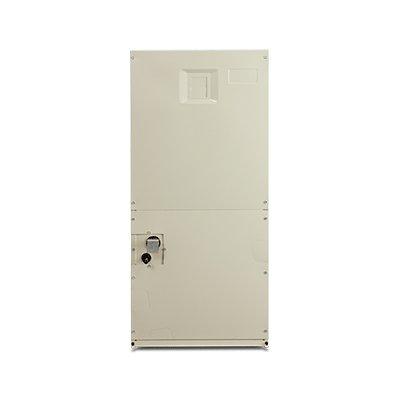Heater power control can be performed with one of three methods:
- Mechanical Contactor
- Solid State Relay
- Silicone Controlled Rectifier
Many are not aware of the difference between the last two methods, Solid State Relay (SSR) and Silicone Controlled Rectifier (SCR) Power Control. Each of these methods has its advantages and disadvantages.
Typically in a desire to have finer or more efficient control of an electric heater in a process, system owners will switch from an old-fashioned contactor to an SSR or SCR relay. There is still quite a wide gap in performance and reliability between those two selections. Let’s examine some of the differences.
SSR v/s SCR
With SSRs, a temperature control loop typically receives input from a temperature sensor
Solid State Relays work like any relay: when some external source tells it to open or close, it does so. With SSRs, a temperature control loop typically receives input from a temperature sensor. This sensor is wired to a controller and that controller sends the signal to the SSR, allowing voltage to flow to the heater that produces resistance and then heat.
The main difference between how an SSR does this and an SCR has to do with the On/Off effect and the frequency at which voltage is delivered to the heater or resistor.
What Do A SSR And A SCR Have In Common?
Both SCRs and SSRs have a distinct advantage over mechanical contactor relays in that they don’t have any moving parts banging into each other.
That allows for a relay that can run longer and not wear out. Both also switch at a much more rapid rate than the old relays, providing potential for much more accurate heating systems, resulting in more predictability and stability to the processes.
Heater power
Once a signal is received in an SSR, it will apply voltage to the heater much faster than an old-fashioned mechanical or mercury displacement relay. Typical rates are in the 2-5 second range for cycling on and off.
These days, those mechanical contacts have been replaced with transistors or thyristors to relay the power to the heater. This is a much finer control versus the old style, but not quite as good as SCR’s. However, Solid State Relays still deliver that same hard demand at a spaced-out rate of 2-5 seconds.
Thermal Cycling
Cycling it on and off, even at a rate of 2 to 5 seconds, will allow the wire to cool down and heat up
Electric heaters that use SSRs work by having a nickel/chromium resistance wire that accepts voltage and then produces heat by way of the resistance of that wire.
Cycling it on and off, even at a rate of 2 to 5 seconds, will allow the wire to cool down and heat up, which is not as much as with mechanical contactors but it still cools and heats. This process is called thermal cycling.
Hydrogen Embrittlement
The cooling and heating will eventually cause some issues within the element over time that will result in the resistor eventually failing. This process of thermal cycling will also lead to a phenomenon called hydrogen embrittlement. This effect causes the wire to do just that, become brittle and finally waste away.
When that occurs, the wire can no longer create heat. Compared to a mechanical contactor with hundreds of thousands of cycles, the SSRs may go to millions of cycles. Yet still, a finite amount of cycling will inevitably cause failure in the long run.
The SCR Advantage
SCRs operate in a similar format versus the SSR but can switch much faster than SSRs. While the time base for an SSR is 2-5 seconds, the time base of an SCR is 1/60th of a second. In the United States, Powerblanket operates on a 60 Hz system. SCRs can turn on and off as fast as 1 cycle or Hz.
So if the controller determines that 50% power is required for a given process, the SCR will turn on for 30 cycles and then off for 30 cycles. If the controller determines that it needs 10% power, then it’s on for 6 seconds and off for 54. This finer control resolution results in the nichrome wire not cooling down enough to experience thermal shock, thus drastically increasing the life expectancy of the heater while reducing potential failure.
SSR and SCR drawbacks
One factor is that they generate heat while switching their respective loads
Both SSRs and SCRs come with a few downsides. One factor is that they generate heat while switching their respective loads. The calculation for this is 1.5 watts x amp x leg switched. For example, let’s say that we are switching a 480V 3 phase 2 leg 20kw load. Amperage on a 480V 3-phase load at 20 kW is 24.09 amps. In this case, Powerblanket would create about 72 watts of heat inside of the control panel where the SSR or SCR is mounted (1.5 x 24.09 amps x 2 legs switched). Managing that heat with a cooling system or even heat sinks is critical.
These units also have a derating curve. The hotter they get, the less amperage they actually can switch, so they create heat and they are limited by heat. Derating curves are critical when evaluating or sizing proper units. Pay attention to what temperature the unit is rated for. One very popular SCR unit out there is rated at 50 F, and another at 70 F.
Complete Thermal Solutions
Powerblanket was created to understand and solve heating issues relating to total temperature control.




















